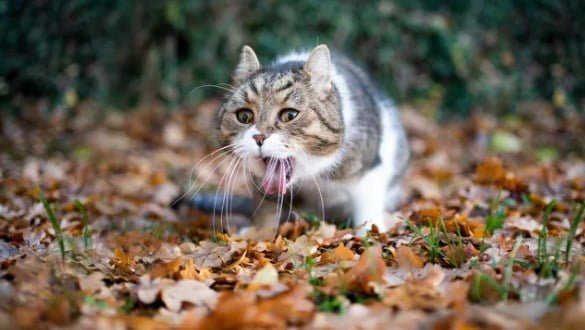If you had a human roommate who regularly vomited on the carpet, you’d probably be concerned for their health.
One of those look-alikes is hair balls. Healthy cats spend between 30% and 50% of their day grooming — and a lot of that fur ends up in their stomach. Usually, it passes through their gastrointestinal system and ends up in their poop. When it doesn’t, you get a hair ball.
Hair balls are passed by vomiting, so the process looks identical. The only difference is in what lands on your rug: a wad of wet fur, rather than a pool of vomit.

Still, even hair balls can be a sign of something more serious.
Another vomit look-alike is coughing. A coughing cat looks like they’re vomiting, but all that comes out is foam or mucus.
Retching is similar: A cat’s stomach pumps in and out as if they’re vomiting — but their stomach is empty, so nothing comes out.
Finally, there’s regurgitation. While vomiting — and the other look-alikes mentioned — is an active process in which the abdomen contracts to work food up and out of the stomach, regurgitation is passive. In this scenario, food that hasn’t made it to the stomach yet simply comes back out.
You can tell if food hasn’t made it to the stomach by looking at the consistency: If it’s still mostly solid chunks and doesn’t contain yellow bile or partly digested food, it’s probably been regurgitated.
But just because it’s not always vomit doesn’t mean fluids exiting a cat’s mouth isn’t cause for concern. Each of these processes looks very similar, and it takes years of training for a veterinarian to spot the difference. When in doubt, call your vet. It could be serious.
Even if it’s not caused by a health condition, there could be something harmful in their food. Regular vomiting that persists for more than three weeks — often have an allergy or intolerance to something in their diet. A veterinarian can diagnose that issue and recommend a diet that would better agree with them.


